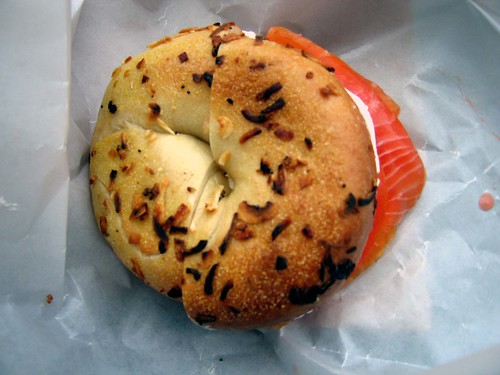Giberson is now up to part five of his critique of Gnu Atheism, and shows no signs of slowing down. Doesn’t the man have any science to do?
Any any rate, Dr. Karl’s now accusing us of having a double standard when we discuss science and religion: we laugh at religion because it doesn’t progress, or, when it does, it progresses reluctantly, kicked in the tuchus by science. But we don’t seem to recognize that science moves forward by kicking itself in the tuchus. Newton himself got dethroned, so why must we make fun of religion for dethroning Yahweh (in whom Giberson no longer believes) in favor of an apophatic do-nothing God? Don’t we see that theology progresses just like science? As Giberson says, “Is there not a strange double standard here?”
Well, no. First of all, the changes in theology are not driven by an increasingly better knowledge of the nature of God. It’s not like we’ve acquired faith-based evidence that Yahweh is out and Apophatic Jebus is in. The rejection of an angry god in favor of a loving one does not come from any objective method of ascertaining the truth about divinity. Rather, it comes from two things.
1. Improvements in morality that came from secular thought. These “improvements”, although embodied in theological change, do not derive from religious “ways of knowing” or an increasingly sophisticated scrutiny of ancient texts by theologians. They come from our slow but inexorable realization that some things are simply wrong. (As to why this happens, I tend to agree with Peter Singer’s thesis as described in The Expanding Circle.)
Why do we no longer stone adulterers, condone slavery, or kill children who disobey their parents? Not because Jesus changed those laws (he came to uphold the Old Testament law), or because theologians wrested some new insights from scripture revealing that these were bad things to do. Rather, as societies interacted and pondered the issues, we realized that it was simply not on to treat people this way. Yes, these moral changes may have been butressed by speeches from the pulpit, and yes, religious organizations have been involved in social advances, but that’s because those advances were already part of the zeitgeist. The idea that blacks should be treated as equals, for instance, did not derive from a new understanding of scripture, regardless of the importance of black churches in the civil rights movement.
2. Improvements in understanding the world that came from science. Some of the “advances” in theology, like the assertion that the Bible isn’t a science textbook, come, pure and simple, from science showing that that the old Biblical textbook of science was simply wrong. We’re not 6,000 years old, the earth is not flat, and we don’t all descend from a single pair of humans. These discoveries have prompted a whole new wave of theological revisionism, attempting to show that this stuff doesn’t matter after all.
Why do we criticize theological “evolution” while applauding the advance of science? Because as science advances it gets closer and closer to the truth, and we know this because it works better and better at explaining the universe. In contrast, the advance of religion doesn’t bring it any closer to the truth. It can’t, because all of religious belief is based on lies. Theology simply gets better and better at rationalizing those lies. And religion’s other “advances” are prompted by either secular morality or science, so theology gets no credit there. Absent science and secular morality, faith would still be mired in the Middle Ages.














